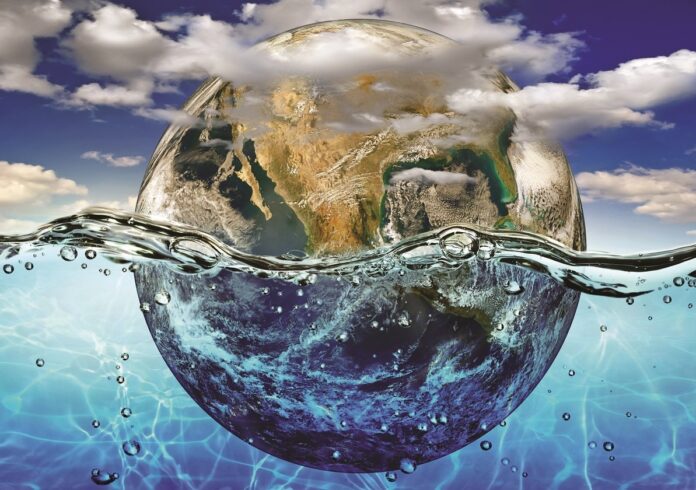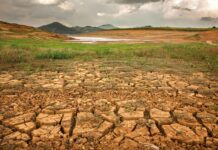With COP26 underway, The Source reviews key IPCC messages on the physical science of climate change
The IPCC’s Sixth Assessment Report (AR6) on the ‘physical science basis of climate change’ represents the latest findings from Working Group I (WGI). It presents the progress on knowledge since AR5, builds on the 2018–2019 IPCC Special Reports, and incorporates subsequent new evidence from climate science that gives greater confidence around these latest findings.
Given this confidence, an increased number of findings are now presented as statements of fact. This represents an important shift given the aim of the report, which ultimately is to present important advances in our ability to understand past, present, and possible future changes, to enable better-informed decision making.
Key concepts
The Technical Summary sets out four key components of the AR6 assessment: characteristics of climate change; human influence on the climate system; regional climate change and risk assessment; and limiting future change.
It defines 12 concepts relevant to these components. Four particularly fundamental concepts include global warming: the change of global surface temperature relative to a baseline. Levels such as 1.5°C, 2°C, 3°C or 4°C, are defined as changes relative to 1850–1900 (the earliest period of 24 reliable observations with sufficient geographic coverage).
Another is cumulative carbon dioxide (CO2) emissions: the total net amount of CO2 emitted into the atmosphere as a result of human activities. Given the nearly linear relationship between cumulative
CO2 emissions and increases in global surface temperature, cumulative CO2 emissions are relevant for understanding how past and future CO2 emissions affect global surface temperature.
A further fundamental concept is the remaining carbon budget: the total net amount of CO2 that could be released in the future by human activities while keeping global warming to a specific global warming level (taking into account the warming contribution from non-CO2 forcers as well).
A fourth aspect of the report relates to quantifying climate drivers: climate drivers interfere with thermal radiation and sunlight reflection, processes that keep Earth in an energy balance. The strength of a climate driver (such as a specific greenhouse gas, or total emissions) is quantified as its Effective Radiative Forcing (ERF), measured in W/m2. Positive ERF leads to warming and negative ERF leads to cooling. In turn, ERF can change the energy imbalance through many positive (amplifying) or negative (dampening) climate feedbacks.
Improved understanding of current climate and system changes
Since AR4 (2007) concluded that “warming of the climate system is unequivocal”, AR6 now confirms that “it is unequivocal that human activities emitting CO2, methane (CH4) and nitrous oxide (N2O) have warmed the atmosphere”. AR6’s best estimate of anthropogenic ERF relative to 1750 is 2.72 W/m2, an increase of 0.43 W/m2 on the AR5 estimate. This takes into account GHG emissions and the revised negative aerosol ERF (because of increased understanding of aerosol-cloud interactions). Updated paleoclimate evidence reveals key indicators of the climate system are at levels unseen in centuries to millennia and are changing at rates unprecedented in at least the last 2000 years.
“Attribution of climate extremes to human influence has strengthened since AR5”
In response to observations that the global surface temperature increased at a slower rate between 1998-2012, IPCC now has very high confidence that this was only a temporary event, induced by internal and naturally forced variability. Substantial knowledge advances, such as a 50% reduction in the uncertainty range of cloud feedbacks, and improved integration of multiple lines of evidence in AR6, reduces the uncertainty over the extent to which climate change is human induced. Attribution of climate extremes to human influence has strengthened since AR5.
Future scenarios and implications for planning
WGI has assessed five emissions scenarios with the stark conclusion that, even under the most ambitious scenario (SSP1 -1.9°C), a global temperature rise of at least 1°C is anticipated.
The report states that “global warming of 1.5°C and 2°C will be exceeded during the 21st century unless deep reductions in greenhouse gas emissions occur in the coming decades”. AR6 estimates that a 1.5°C rise (above pre-industrial levels) could occur in the 2030s, 10 years earlier than the midpoint of the likely range assessed in Special Report SR1.5 (‘The Impacts of Global Warming of 1.5°C Above Pre-industrial Levels’). It also identifies that “many changes in the climate system become larger in direct relation to increasing global warming”.
AR6 dedicates more than 200 pages to the specific effects of climate change on the global water cycle (Chapter 8). It concludes with high confidence that human-caused climate change has driven detectable changes in the global water cycle since the mid-20th century and that “continued global warming will further intensify the global water cycle, including its variability, global monsoon precipitation and the severity of wet and dry events in most regions of the world and under all emissions scenarios”.
WGI has analysed the performance of ocean and land carbon sinks and shows that they become less effective under scenarios where emissions continue. Emissions are more effective at raising atmospheric CO2 than removals are at lowering it. Worryingly, the report concludes that “many changes are irreversible for centuries to millennia”.
In sections on Risk Assessment and Limiting Future Change, the report notes that in the near term, natural drivers and internal variability will modulate human-caused changes, and these modulations are important to consider in planning for the full range of possible changes.
However, the conclusions are clear: that the total remaining carbon budget to avoid a rise greater than 2°C is 300-900 Gt CO2, and that reaching at least net-zero CO2 emissions, along with strong reductions in other greenhouse gas emissions, is required to limit human-induced global warming.
See: https://www.ipcc.ch/report/sixth-assessment-report-working-group-i/








